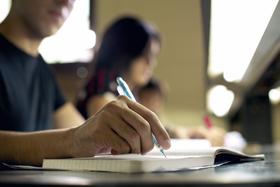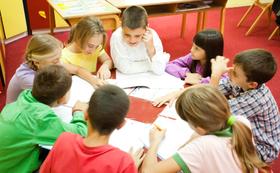Top Rankings
Anderson 01 School District ranks among the top 20% of public school district in South Carolina for:
Category
Attribute
Overall Rank
Highest overall rank (Top 5%)
Math Proficiency
Highest math proficiency (Top 10%)
Reading/Language Arts Proficiency
Highest reading/language arts proficiency (Top 5%)
Science Proficiency
Highest science proficiency (Top 5%)
Graduation Rate
Highest graduation rate (Top 5%)
For the 2025-26 school year, there are 3 public middle schools serving 2,490 students in Anderson 01 School District. This district's average middle testing ranking is 10/10, which is in the top 5% of public middle schools in South Carolina.
Public Middle Schools in Anderson 01 School District have an average math proficiency score of 52% (versus the South Carolina public middle school average of 34%), and reading proficiency score of 61% (versus the 46% statewide average).
Minority enrollment is 26% of the student body (majority Hispanic), which is less than the South Carolina public middle school average of 52% (majority Black).
Overview
This School District
This State (SC)
# Schools
14 Schools
352 Schools
# Students
11,001 Students
221,816 Students
# Teachers
695 Teachers
15,785 Teachers
Student-Teacher Ratio
16:1
16:1
Student By Grade
District Rank
Anderson 01 School District, which is ranked within the top 5% of all 74 school districts in South Carolina (based off of combined math and reading proficiency testing data) for the 2022-2023 school year.
The school district's graduation rate of 94% has increased from 90% over five school years.
Overall District Rank
#3 out of 74 school districts
(Top 5%)
(Top 5%)
Math Test Scores (% Proficient)
61%
43%
Reading/Language Arts Test Scores (% Proficient)
67%
52%
Science Test Scores (% Proficient)
65%
50%
Graduation Rate
94%
84%
Students by Ethnicity:
Diversity Score
0.43
0.66
% American Indian
n/a
n/a
% Asian
2%
2%
% Hispanic
11%
13%
% Black
8%
31%
% White
74%
48%
% Hawaiian
n/a
n/a
% Two or more races
5%
6%
All Ethnic Groups
District Revenue and Spending
The revenue/student of $11,424 in this school district is less than the state median of $15,223. The school district revenue/student has declined by 8% over four school years.
The school district's spending/student of $14,470 is less than the state median of $14,820. The school district spending/student has declined by 8% over four school years.
Total Revenue
$126 MM
$12,084 MM
Spending
$159 MM
$11,764 MM
Revenue / Student
$11,424
$15,223
Spending / Student
$14,470
$14,820
Best Anderson 01 School District Public Middle Schools (2025-26)
School
(Math and Reading Proficiency)
(Math and Reading Proficiency)
Location
Quick Facts
Rank: #11.
Powdersville Middle School
(Math: 59% | Reading: 67%)
Rank:
Rank:
8/
Top 30%10
135 Hood Road
Greenville, SC 29611
(864) 269-1821
Greenville, SC 29611
(864) 269-1821
Gr: 6-8 | 797 students Student-teacher ratio: 14:1 Minority enrollment: 30%
Rank: #22.
Wren Middle School
(Math: 51% | Reading: 62%)
Rank:
Rank:
7/
Top 50%10
1010 Wren School Road
Piedmont, SC 29673
(864) 850-5930
Piedmont, SC 29673
(864) 850-5930
Gr: 6-8 | 923 students Student-teacher ratio: 16:1 Minority enrollment: 20%
Rank: #33.
Palmetto Middle School
(Math: 48% | Reading: 54%)
Rank:
Rank:
6/
Top 50%10
803 North Hamilton Street
Williamston, SC 29697
(864) 847-4333
Williamston, SC 29697
(864) 847-4333
Gr: 6-8 | 770 students Student-teacher ratio: 14:1 Minority enrollment: 29%
Recent Articles

School Vouchers: Updated Pros and Cons (2025 Review)
Comprehensive 2025 analysis of school vouchers, weighing benefits and challenges for families, funding, outcomes, and policy directions.

Benefits and Drawbacks of Homework in 2025
Explore updated 2025 insights on homework鈥檚 benefits, drawbacks, mental health impact, best practices, and policy trends in U.S. public schools.

Charter Schools vs Public Schools 2025: Key Differences & Trends
Explore updated 2025 insights comparing charter schools vs public schools, enrollment, academic outcomes, funding, and real-world examples for families and educators.





